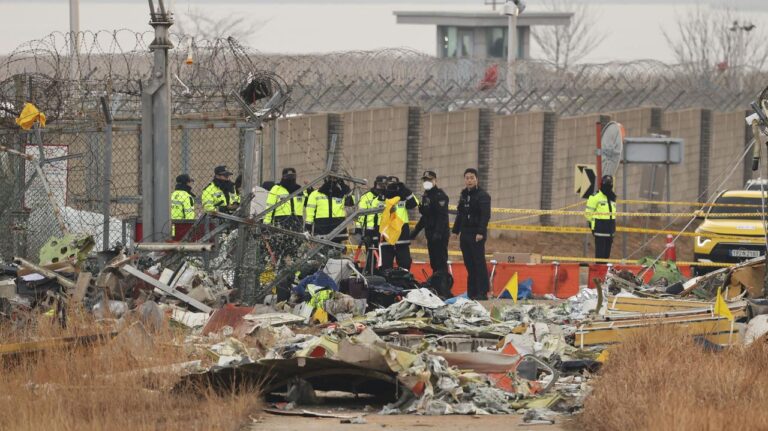A plane that crashed in South Korea after landing without landing gear hit a concrete wall. Aviation experts interviewed by the BBC commented on the location of the structure near the runway.
South Korea’s Jeju Air plane crashed on Sunday while landing at Muan Airport in the south of the country. As a result of the natural disaster, 179 people died. On Monday, Reuters released footage showing the car without an extended undercarriage on the runway and then crashing into a concrete wall.
READ ALSO: Landing without landing gear, impact, big explosion. Boeing crash on video
Officials investigating the cause of the plane crash are debating how the concrete wall located 250 meters from the runway affected the severity of the plane crash.
Learmount: the airport was good, the concrete wall was at fault
Aviation safety expert David Learmount said that had there not been an “obstruction” in the plane’s path, the plane “would have stopped and most of the people, probably all of them, would have been alive.”
Before attempting to land, the pilot reported that the aircraft had struck a bird and then aborted the attempt to land and requested clearance to land in the opposite direction.
The plane landed without extending the landing gear. He flew along the 2800 meter long runway and it seemed that the maneuver was going to be successful. Learmount assessed that the landing was “as good as possible: the wings were level and the nose was not raised so high as to break the tail”.
– The reason for the death of so many people was not the landing itself, but the fact that the plane hit a very strong obstacle behind the runway, – he emphasized.
At Moan Airport in South Korea, there is a Google concrete wall about 250 meters from the runway
Can the concrete structure be replaced with something?
Lufthansa pilot Christian Beckert said the concrete structure behind the runway was “unusual”. “Normally there is no fence behind the runway at the airport,” he said.
According to South Korea’s Yonhap news agency, the concrete structure houses the navigation system that helps the planes land – it is 4 meters high, covered with soil, and elevated to keep the locator at a suitable level and ensure it works properly.
The Ministry of Transport of South Korea said that similar equipment and concrete structures have been installed at other airports in the country and some abroad. However, authorities are investigating whether it should have been made of lighter materials that would have broken on impact.
Disaster in Korea YONHAP/PAP/EPA
Chris Kingswood, a 48-year-old pilot with 48 years’ experience, said that “obstacles within a certain radius and a certain distance from the runway should be vulnerable, meaning that if the aircraft hits them, they will break.”
– Airplanes are not strong structures. They are designed to be lightweight, which ensures their efficiency in flight. They’re not really designed to move at high speeds on their belly, so any design could cause the hull to crack, he added.
Kingswood noted that fuel is stored in the wings, so if a wing breaks, the risk of fire is significant. – So, it is not certain that if there was no wall, the result would have been completely different, – he said.
The pilot emphasized that “he would be surprised if the airport does not meet all the requirements according to industry standards.” “I suspect that if we go around many of the major international airports, we will find barriers that are similarly perceived as a threat,” he said.
Did the pilots know about the obstacle?
Aviation analyst Sally Gethin doubts the pilot was aware of the obstacle there, especially considering the plane was approaching from the opposite direction than usual. He said it remains to be seen whether the pilots were aware of this hard boundary outside the runway.
– If the control tower ordered them to change the destination of the runway for the second time, it should have been revealed thanks to the records stored in the black boxes, – he recalled.
Main photo source: YONHAP/PAP/EPA

